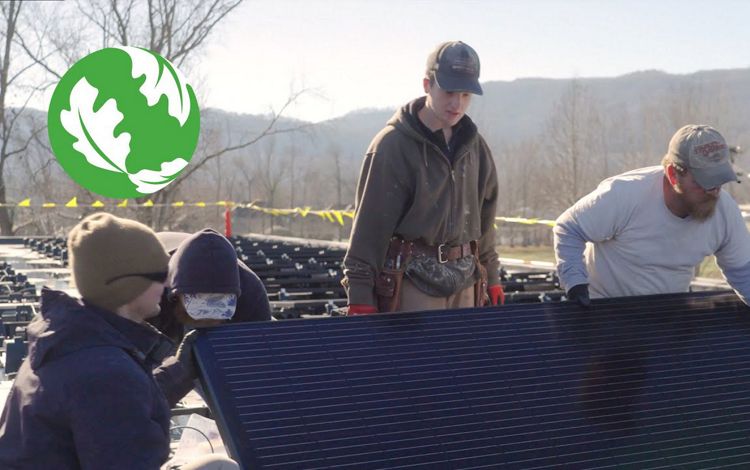More than 400 million years ago, natural forces conspired to make the Appalachians one of the most resilient, diverse and productive places on Earth. This ancient chain of forested mountains, valleys, wetlands and rivers spans roughly 2,000 miles from Alabama to Canada.
The Appalachians’ rich variety of species, natural resiliency and diverse communities and cultures put it alongside the Amazon Rainforest and the Kenyan grasslands as one of the most globally important landscapes for tackling climate change and conserving biodiversity. Some 16,000 years ago, Indigenous Peoples—including the Cherokee, Haudenosaunee, Powhatan and Shawnee—began living in the Appalachian Mountains and stewarding this landscape. Today, at least 22 million people call the region home, and millions more rely on its natural abundance for health, livelihoods and recreation.
Appalachians Biodiversity
- 64 high-priority bird species use the Appalachians as a critical migration corridor.
- 80,000 occurrences of rare species can be found in the Appalachians.
- Bobcat, black bear, moose, elk and other wide-ranging iconic mammals move through the Appalachians following natural corridors.
What We Stand to Lose
Evidence of the Appalachians’ resiliency to climate change dates back to the age of woolly mammoths and saber-toothed cats, when the region provided refuge from the most recent ice age. Today, the Appalachians still represent a place of hope. The verdant forests have a remarkable ability to absorb and store excess carbon—currently storing an estimated 56% of the eastern region’s above-ground carbon, which helps limit warming—while the ancient mountains provide havens of cooler temperatures.
But, like everything, the Appalachians have a tipping point. Growing threats from urban development, mining, agriculture, unsustainable forestry and fragmentation caused by dams and roads put the region’s public, economic and ecological health at risk. At present, just 26% of this globally important landscape is protected. Climate change further exacerbates these issues. Rising temperatures and extreme weather events are altering and destroying habitats, causing plants and animals to shift their ranges northward and to higher elevations. Nature is on the move and once again seeking refuge in the Appalachians.
We cannot afford to lose the Appalachians. If we continue to take the Appalachians for granted, we stand to lose a magnitude of species, the fight against climate change and the security, provisions and benefits this landscape promises to future generations. We must act now to protect and restore the Appalachians before we lose what we cannot replace.
The Promise of the Appalachians
Imagine a healthy, resilient and connected Appalachians landscape that supports the co-prosperity of people and nature for generations to come. To achieve this vision, The Nature Conservancy is working across geographical and political boundaries to implement bold solutions.

The Nature Conservancy Launches Grant Program Across the Appalachians
Grants of up to $100,000 to be awarded for land protection projects to promote resilience, connectivity, and communities in 18 states throughout the Appalachians
Family Forest Carbon Program
America’s family forest owners have a critical role to play in addressing the climate crisis.
See how the Family Forest Carbon Program is working in the Appalachians.
Our Key Strategies for the Appalachians
To mitigate climate change, sustain biodiversity and ensure the Appalachians remain a place where all life can thrive, TNC has identified three key approaches founded in nature:
- Stitch together a connected landscape of climate resilient lands, corridors and waters at the pace and scale necessary to mitigate climate change and protect biodiversity.
- Leverage land and water conservation to provide critical natural climate solutions for healthy communities and resilient landscapes.
- Aid the capacity of local conservation organizations, Indigenous Peoples and local communities to help conserve high priority lands and waters; ensure conservation outcomes equitably benefit all who live in and rely on the Appalachians.
Using innovative mapping and the best-available science to guide our work, TNC is implementing these approaches across the entire Appalachians with the help of partners, supporters, friends and allies. It’s essential that we fully acknowledge and embrace the contribution nature can make in helping us solve today’s biggest challenges—conserving the Appalachians will significantly contribute to global goals of tackling climate change and conserving biodiversity.

Bold Vision, Bold Action
Bold visions require bold action. Until recently, the story of the Appalachians was authored by the most powerful natural forces on Earth. Now, we’re the authors. The decisions we make over the next decade will forever alter the future of the Appalachians and the millions of people who depend on its natural bounty.
With a long history of working in the Appalachians and as the only conservation organization operating across the entire landscape, The Nature Conservancy is uniquely positioned to ensure the Appalachians remain healthy, resilient and connected. But we can’t do it alone.
Conserving the Appalachians will demand a strong, collaborative movement of diverse stakeholders. Together, we have an unprecedented opportunity to protect one of the world’s most resilient and biologically-rich landscapes—and in doing so, create our own legacy. The impacts of our shared success will be written in the future of life itself across North America. Will you join us?
Quote: Mark Anderson
Nature is changing, and we can’t hold it steady, so we have to find a way to protect it while it shifts.
Download
Videos About the Appalachians






Species of the Allegheny Front
Learn more about this astonishing landscape, the species that call it home and the work that TNC is doing to conserve this special place.

Cumberland Forest Community Fund
Supporting nature-based economic and community development in the Appalachian regions of Southwest Virginia, Tennessee and Kentucky.

Cumberland Forest: 2023 Impact Report
Explore the conservation and community impacts delivered in 2023 by one of TNC's largest conservation projects in the eastern United States.

Hamer Woodlands at Cove Mountain
New land acquisition creates a 14-mile stretch of protected land critical for species adaptation to climate change.







